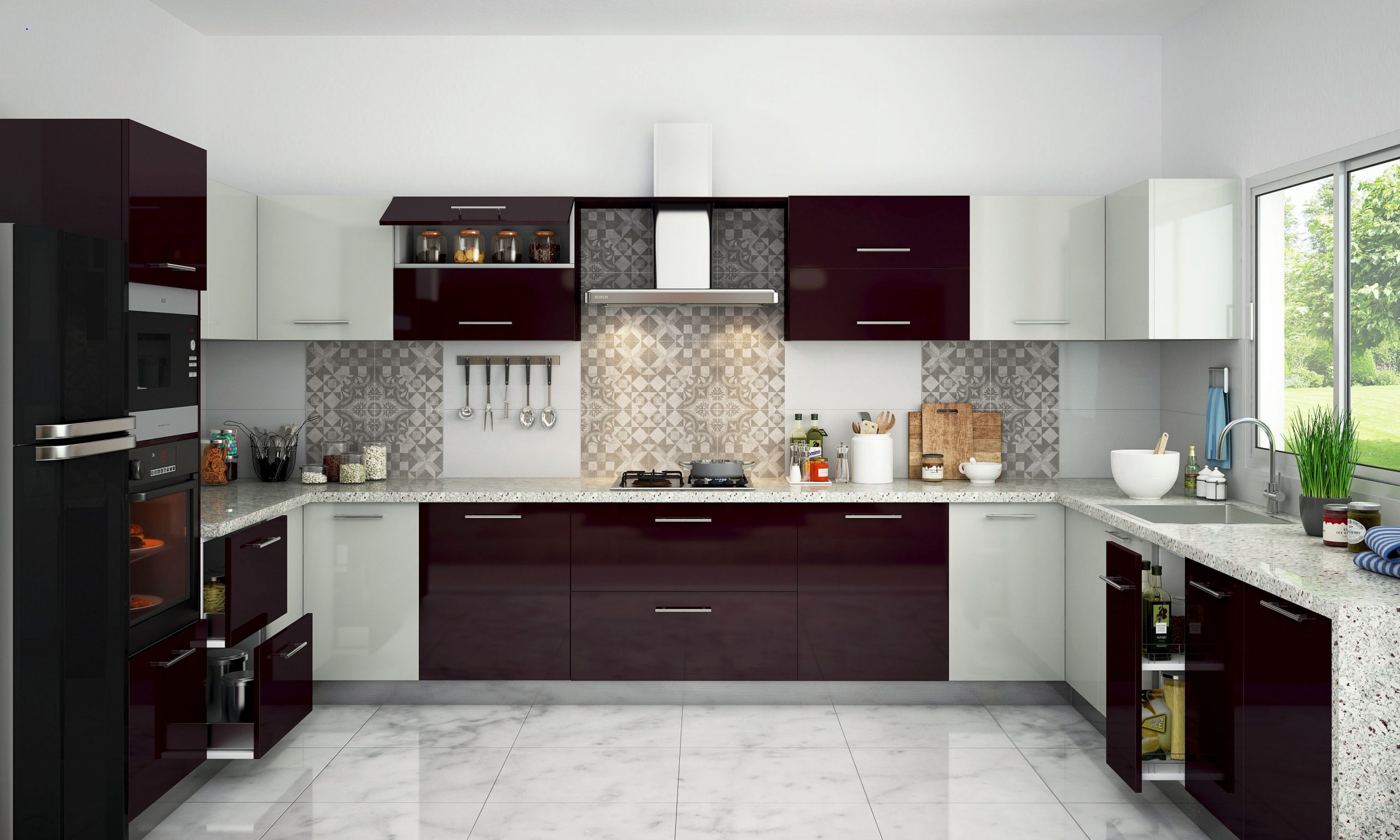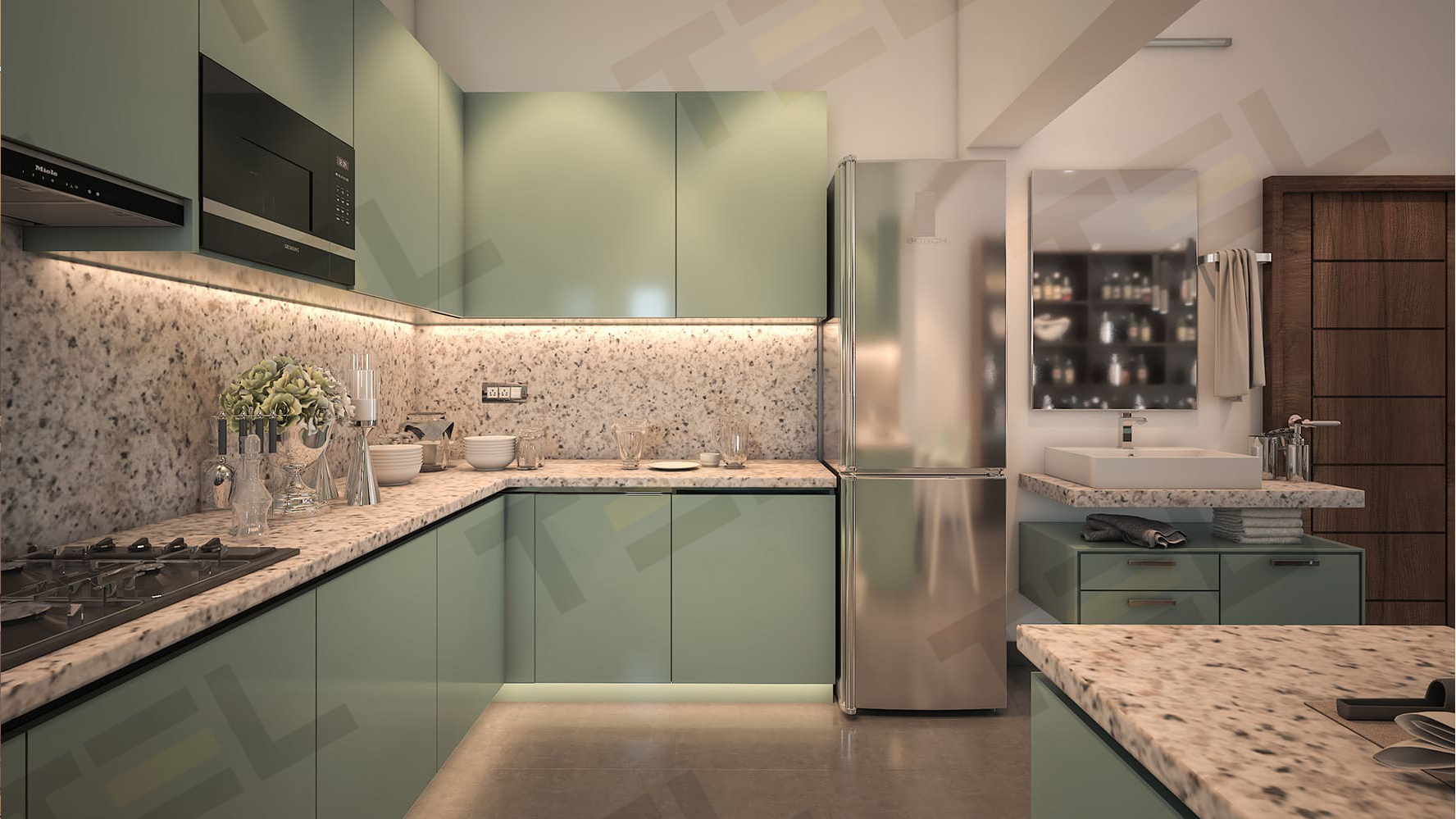Popular Modular Kitchen Cabinet Styles in India: Modular Kitchen Cabinet Designs India

The heart of any Indian home, the kitchen, is undergoing a beautiful transformation. Modular kitchens, with their sleek designs and efficient layouts, are becoming increasingly popular. Understanding the various styles available is key to creating a space that reflects your personality and culinary needs. Let’s delve into the most prevalent modular kitchen cabinet styles gracing Indian homes today.
Five Prevalent Modular Kitchen Cabinet Styles in India
The selection of a modular kitchen style is a deeply personal journey, reflecting individual tastes and the overall aesthetic of the home. Each style offers a unique blend of functionality and visual appeal, catering to diverse needs and budgets. Understanding the characteristics of each style is crucial in making an informed decision.
| Style | Material | Features | Price Range (INR) |
|---|---|---|---|
| L-Shaped | Plywood, MDF, PVC, laminate | Efficient use of corner space, ideal for smaller kitchens, ample storage | ₹1.5 Lakh – ₹5 Lakh |
| U-Shaped | Plywood, MDF, acrylic, veneer | Maximum storage and counter space, suitable for larger kitchens, creates a defined cooking zone | ₹2.5 Lakh – ₹8 Lakh |
| Straight/Linear | MDF, high-gloss laminate, solid wood | Space-saving, ideal for smaller kitchens or open-plan layouts, minimalist aesthetic | ₹1 Lakh – ₹3 Lakh |
| Island Kitchen | Granite, marble, engineered stone, wood | Adds a focal point, extra counter space and storage, ideal for larger kitchens, promotes interaction | ₹3 Lakh – ₹15 Lakh+ |
| Parallel/Galley | Plywood, MDF, laminate | Efficient use of space, ideal for long narrow kitchens, requires careful planning | ₹1.2 Lakh – ₹4 Lakh |
Advantages and Disadvantages of Each Style
Each modular kitchen style presents a unique set of advantages and disadvantages. Careful consideration of these factors is crucial in aligning the design with your lifestyle and practical needs.
Modular kitchen cabinet designs india – L-Shaped: Advantages include efficient space utilization and ample storage. Disadvantages might include limited counter space in smaller L-shaped designs. For example, a small L-shaped kitchen might benefit from clever use of pull-out drawers and vertical storage solutions.
U-Shaped: Advantages include maximized storage and counter space. Disadvantages can be the significant space requirement; not suitable for very small kitchens. In a large U-shaped kitchen, a breakfast bar could be incorporated into the design.
Straight/Linear: Advantages include its space-saving nature and minimalist aesthetic. Disadvantages might be limited counter and storage space compared to other styles. A well-designed linear kitchen in a smaller space can maximize efficiency with built-in appliances and clever storage solutions.
Island Kitchen: Advantages include the added counter space and social aspect. Disadvantages are the significant space requirement and higher cost. A smaller island in a larger kitchen might focus on seating and a prep area rather than full cooking facilities.
Parallel/Galley: Advantages include efficient workflow and space utilization in narrow kitchens. Disadvantages can be limited counter space and the need for careful planning. A galley kitchen can be optimized with double-sided cabinetry and carefully placed appliances.
Adapting Styles to Different Kitchen Sizes and Layouts
The beauty of modular kitchens lies in their adaptability. Each style can be tailored to suit various kitchen sizes and layouts, ensuring optimal functionality and aesthetic appeal. The key lies in intelligent space planning and the selection of appropriate cabinetry and appliances. For instance, a small L-shaped kitchen can be made to feel spacious by using light colors and mirrors, while a large U-shaped kitchen can accommodate a large island with seating for casual dining.
Materials and Finishes for Indian Modular Kitchens

Ah, my dear friend, the heart of a home, the soul of a family – the kitchen! And in India, where culinary traditions are woven into the very fabric of our lives, the modular kitchen holds a special place. Choosing the right materials and finishes is an art, a dance between functionality, aesthetics, and, of course, budget. Let’s delve into the symphony of surfaces and styles that await you.
The selection of materials and finishes significantly impacts the longevity, aesthetics, and overall feel of your modular kitchen. Each option presents a unique blend of advantages and disadvantages, demanding careful consideration based on your lifestyle, preferences, and, naturally, your financial capacity.
Popular Materials for Modular Kitchen Cabinets
The foundation of any stunning modular kitchen lies in the choice of cabinet material. Each option offers a distinct personality, influencing both the look and the lifespan of your culinary haven. Let us examine some of the most favoured choices in India.
- Wood: Ah, the classic! Solid wood exudes warmth and timeless elegance. It’s durable, repairable, and offers unparalleled richness. However, it comes with a higher price tag and requires regular maintenance to preserve its beauty. Think rich teak or majestic sheesham – the epitome of Indian craftsmanship.
- Plywood: A more economical choice than solid wood, plywood provides a robust and stable base for your cabinets. Its resistance to warping and termite attacks makes it a practical option. However, it lacks the inherent charm of solid wood and its finish might not be as luxurious.
- MDF (Medium-Density Fibreboard): MDF is a versatile and cost-effective material, offering a smooth surface ideal for various finishes. It’s relatively easy to work with, allowing for intricate designs. However, it’s less durable than wood or plywood and can be susceptible to moisture damage if not properly sealed.
- Laminate: A popular choice for its affordability and wide range of colours and textures. Laminate is easy to clean and maintain. However, it can be susceptible to scratches and chipping, and its lifespan is generally shorter than that of wood-based materials. A well-chosen laminate, though, can mimic the look of natural materials at a fraction of the cost.
- Acrylic: Offering a high-gloss, sophisticated look, acrylic is resistant to scratches and stains. It’s easy to clean and adds a touch of modern luxury to the kitchen. But, its higher price point and susceptibility to heat damage need to be considered.
Finishes and Their Impact
The finish is the final flourish, the crowning jewel of your kitchen design. It’s the element that truly brings your vision to life, shaping the atmosphere and reflecting your personal style. The possibilities are as vast as the Indian spice market itself!
From the subtle matte elegance of a painted finish to the dazzling shine of a high-gloss acrylic, the choice influences everything from the perceived size of the space to the overall mood. Consider the textures – the smooth coolness of lacquer, the rustic charm of a wood grain finish, or the modern minimalism of a sleek foil wrap. Popular colour palettes range from the warm earth tones reflecting the Indian landscape to the vibrant hues of our festivals – the choices are endless!
Modular Kitchen Cabinet Designs
Now, let’s visualize three distinct kitchen designs, each showcasing the unique potential of different materials and finishes.
- Rustic Charm (Wood and Matte Finish): Imagine a kitchen crafted from rich sheesham wood, finished with a warm honey-toned matte lacquer. The cabinets feature subtle carvings, echoing traditional Indian craftsmanship. The countertops are made of granite, adding a touch of earthy elegance. This design appeals to those who appreciate traditional aesthetics and handcrafted quality. The target audience is likely homeowners who value authenticity and timeless design.
- Modern Minimalism (MDF and High-Gloss Acrylic): Here, sleek, handleless MDF cabinets are wrapped in high-gloss white acrylic. The clean lines and minimalist aesthetic are enhanced by stainless steel appliances and a quartz countertop. This design creates a sense of spaciousness and sophistication. The target audience would be young professionals or modern families who appreciate clean lines and contemporary design.
- Contemporary Fusion (Plywood and Laminate): This design cleverly blends practicality and style. Plywood cabinets are wrapped in a durable laminate, mimicking the look of natural wood grain. A splashback in a bold, vibrant colour adds a touch of personality. This is a versatile option, suitable for a range of budgets and aesthetics. The target audience is broader, encompassing families looking for a balance between cost-effectiveness and stylish design.
Space Optimization and Design Considerations for Indian Kitchens

Designing a modular kitchen in India, especially when space is limited, requires a delicate balance of functionality and aesthetics. The heart of any Indian home, the kitchen, often needs to accommodate a diverse range of cooking styles and storage needs within a surprisingly small footprint. This necessitates clever space-saving techniques and strategic design choices. We’ll explore how to maximize every inch, creating a kitchen that is both efficient and visually pleasing.
Space-Saving Techniques and Efficient Layouts for Smaller Indian Kitchens, Modular kitchen cabinet designs india
Optimizing space in a smaller Indian kitchen involves a holistic approach, considering every element from cabinet placement to appliance integration. Smart storage solutions are crucial. Think vertically! Tall, narrow cabinets maximize vertical space, often overlooked in traditional kitchen designs. Pull-out drawers and shelves allow for easy access to even the most rearward items. Corner cabinets, often wasted space, can be transformed with clever carousel units or magic corners, maximizing accessibility.
Effective space planning begins with a detailed assessment of your cooking habits and storage needs. A well-planned layout streamlines workflow and minimizes wasted movement.
Consider a galley kitchen layout, ideal for long, narrow spaces. This linear arrangement keeps everything within easy reach. Alternatively, an L-shaped layout can efficiently utilize corner space, while a U-shaped design, if space permits, offers ample counter space and storage. Remember, every inch counts, so meticulous planning is essential. For instance, a shallow pantry, integrated into a wall, can provide significant storage without encroaching on valuable floor space. A thoughtfully designed spice rack, perhaps mounted on a pull-out shelf, keeps spices organized and easily accessible.
Appliance Integration and its Impact on Cabinet Design
The integration of appliances significantly influences cabinet design. Careful consideration of appliance placement and dimensions is vital to ensure seamless integration and efficient workflow. Custom-designed cabinets can perfectly accommodate ovens, microwaves, and dishwashers, creating a sleek, built-in look.
| Appliance | Placement Considerations | Cabinet Integration Needs | Space Requirements (approx.) |
|---|---|---|---|
| Microwave Oven | Ideally near the cooking area for easy access | Dedicated upper cabinet or countertop space | 1-2 cubic feet |
| Built-in Oven | At waist height for convenient use | Custom-built cabinet with ventilation | 2-3 cubic feet |
| Dishwasher | Near the sink for efficient workflow | Full-height cabinet with plumbing access | 2-3 cubic feet |
| Refrigerator | Preferably near the cooking area, but away from heat sources | Consider a cabinet-integrated panel for a cohesive look | Variable, depending on size |
Maximizing Storage Space and Creating a Functional Kitchen
Innovative storage solutions are key to maximizing space and functionality. Think beyond standard cabinets. Utilize vertical space with tall pantry cabinets or even a ceiling-height pantry. Pull-out drawers and spice racks provide efficient access to frequently used items. Consider using slimline appliances to save valuable counter space. Multi-functional furniture, like a kitchen island with integrated storage, can also be incredibly useful.
Remember, a well-designed kitchen is not just about storage; it’s about creating a comfortable and efficient workspace.
For example, a family in a small Mumbai apartment might opt for a galley kitchen with deep drawers and vertical storage to accommodate their large collection of spices and utensils. A family in a larger Bangalore home might choose a U-shaped kitchen with an island, offering ample counter space for food preparation and storage. These examples illustrate how the same design principles can be adapted to suit different needs and spaces. The key is to prioritize functionality and visual appeal within the given constraints.
